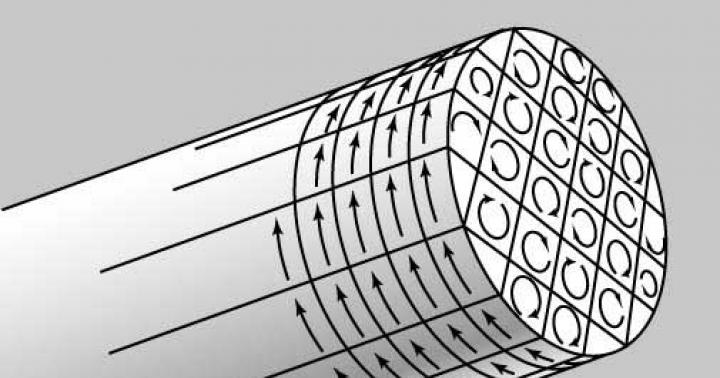Многие браузеры снабжены множеством плагинов, расширений, панелей инструментов, в которых Вы, в действительности, не нуждаетесь. Часто они снижают скорость работы в интернете и производительность.
Позвольте представить вашему вниманию полезные советы о том, как обеспечивать хорошую скорость работы в браузерах Google Chrome и Mozilla Firefox .
Отключите плагины и расширения в самом браузере
Начнем с того, что укажем основные различия между плагинами и расширениями.
Что такое плагин?
Плагин - это библиотека стороннего разработчика, присоединенная к браузеру. Он может быть встроенным в веб-страницу, и в этом случае он будет работать только на этой веб-странице.
Вот примеры наиболее распространенных плагинов: Adobe Flash , Java , Microsoft Silverlight , Apple Quicktime, Adobe Reader.
Что такое расширение?
Расширения, или дополнения, могут добавлять функции в пользовательский интерфейс браузера и обрабатывать страницы, которые он загружает. Несмотря на то, что они могут показаться схожими, фактически расширения не то же самое, что плагины; они оказывают влияние на сам веб-браузер, а также на страницу. Вот некоторые примеры важных или необходимых дополнений: Adblock Plus, Firebug, Microsoft .NET Framework Assistant.
Ниже вы найдете инструкции о том, как удалить или отключить ненужные плагины и расширения в Google Chrome и Mozilla Firefox.
В Google Chrome:
1. Откройте Google Chrome и нажмите кнопку меню на панели браузера.
2. Щелкните Инструменты (Tools).
3. Выберите Расширения (Extensions).
4. Щелкните значок корзины напротив расширения, которое вы хотите полностью удалить.
5. Когда появится диалог подтверждения, щелкните Удалить (Remove). Вы можете также временно отключить расширение, выполнив это на странице Расширения.

В Mozilla Firefox:
1. Вверху окна Firefox щелкните кнопку Firefox и затем Дополнения (Add-ons). Откроется вкладка менеджера расширений.
2. На вкладке менеджера расширений выберите Расширения или Внешний вид .
3. Выберите дополнение, которое хотите отключить.
4. Щелкните кнопку Отключить(Disable).
5. Щелкните Перезапустить сейчас (Restart now), если будет запрос на перезапуск. Программа запомнит открытые вкладки и откроет их после перезапуска программы.

6. Снова войдите в меню Дополнения и выберите Плагины (Plugins).
7. Выберите плагин, который вы хотите выключить.
8. Выберите Никогда не включать в ниспадающем меню.
Очистите кэш и удалите cookie
Этот процесс необходим из-за количества данных, сохраняемых браузером, которое в значительной степени является излишней тратой дискового пространства.
У Вашего браузера есть папка, в которой определенные загруженные элементы сохраняются для использования в будущем. Графические изображения (кнопки, баннеры, значки или диаграммы), фотографии и даже целые веб-страницы - вот примеры элементов кэша. При обращении к странице веб-сайта компьютер сначала просматривает свою папку кэша, проверяя, не сохранял ли он уже изображения для этой страницы, и если это так, он не будет загружать их снова. Это делается для ускорения загрузки.
Папки кэша могут стать довольно большими и могут занимать более 100 Мбайт объема на жестком диске, храня графику для сайтов, которые Вы, возможно, никогда не посетите снова. В том случае, если Вы заботитесь о вашей конфиденциальности или об экономии места для хранения на диске, может быть благоразумным периодическая очистка кэша. Это также позволит браузеру иметь доступ к свежим веб-страницам, не прибегая к использованию старых элементов кэша.
Для того, чтобы опустошить кэш своего браузера, выполните нижеследующие шаги.
При использовании Google Chrome:
1. Откройте Google Chrome.
2. Нажмите кнопку меню на панели браузера.
3. Выберите Инструменты (Tools).
4.Выберите Удаление данных просмотренных страниц (Clear browsing data)
5. В диалоговом окне установите флажки возле тех видов данных, которые хотите удалить. Флажки Очистить историю просмотров (Clear browsing history), Очистить историю загрузок (Clear download history), Очистить файлы cookie и другие данные сайтов и подключаемых модулей (Delete cookies and other site and plug-in data), Очистить кэш (Empty the cache) установлены по умолчанию и мы рекомендуем оставить эти флажки включенными.
6. В ниспадающем меню вверху диалога выберите, какой объем данных вы желаете удалить. Для удаления всех данных выберите За все время .
7. Нажмите Очистить историю (Clear browsing data)

В Mozilla Firefox:
1. Откройте Mozilla Firefox.
2. В верхней части окна Firefox щелкните кнопку Firefox и затем выберите Настройки (Options).
3. Выберите Дополнительные (Advanced).
4. Щелкните вкладку Сеть (Network).
5. В разделе Кэшированное веб-содержимое (Cached Web Content) щелкните Очистить сейчас (Clear Now).

6. Чтобы закрыть диалог настроек, щелкните OK.
Сбросьте параметры и настройки браузера
Иногда, когда Вы устанавливаете какую-то программу, она может изменить настройки браузера без Вашего ведома, и Вы после этого можете заметить, что Ваш браузер ведет себя как-то не так. Программы могут добавлять различные расширения или менять поисковую систему, установленную по умолчанию, а также могут вызывать различные проблемы при работе в сети.
В Google Chrome:
1. Щелкните кнопку меню на панели инструментов браузера.
2. Выберите Настройки (Settings).
3. Щелкните Показать дополнительные настройки (Click Show advanced settings) и найдите раздел Сброс настроек браузера ("Reset browser settings").
4. Щелкните Сброс настроек браузера (Reset browser settings).

5. В диалоговом окне щелкните Сбросить (Reset).
Обратите внимание: если у вас установлен флажок "Отправьте отчет о текущих настройках Google Chrome и помогите усовершенствовать работу браузера" ("Help make Google Chrome better by reporting the current settings "), вы анонимно отправляете в Google данные о ваших настройках Chrome.
В Mozilla Firefox:
1. Откройте Mozilla Firefox.
2. В верхней части окна щелкните кнопку Firefox, перейдите в подменю Справка (Help) и выберите (Troubleshooting Information).
3. Щелкните кнопку Сбросить Firefox (Reset Firefox) в верхнем правом углу страницы Информация для решения проблем .
4. Чтобы продолжить, щелкните Сбросить Firefox в открывшемся окне подтверждения.
5. Firefox закроется и выполнит сброс. После завершения вновь считанная информация будет перечислена в окне. Нажмите кнопку Завершить (Finish), и Firefox откроется.

Установите новый браузер
По материалам интернет-портала . Перевод на русский язык: Александр Рябов
Нашли опечатку? Выделите и нажмите Ctrl + Enter
Браузер стал медленно работать? Часто случаются вылеты и краши? – верный признак того, что Firefox жрет память. Утилите требуется в среднем 500 мегабайт оперативки, как и другим браузерам. Из-за чего это происходит? – большое количество открытых вкладок, нагромождение ядра плагинами и расширениями, старая версия программы. Если раньше использовал флэш по умолчанию для каждой открытой страницы, то теперь только по необходимости – это частично решило проблему с нагрузкой ОЗУ, но не исключило ее.
Как узнать, сколько памяти потребляет Firefox
Оптимальный «расход» составляет 300–600 мегабайт. Уже с 800 начинаются заметные проблемы с производительностью, а на гигабайте утилита сворачивается «По неопределенным причинам» и предлагает «Отправить отчет о падении». Чтобы узнать, сколько потребляет та или иная программа:
Что делать
Почему Фаерфокс жрет много памяти уже разобрались почти, не упомянули косяки разработчиков браузера и сертифицированных дополнений. Да, именно тех плагинов, которые официально одобрены Мозиллой. Всеми любимый убийца рекламы AdBlock Plus вызывает серьезные проблемы с быстродействием не только в Фаерфокс, но и в Гугл Хром. Попробуйте отключить его, если браузер стал медленно работать. Или:
- Обновите Firefox
- Перезагрузите программу или систему.
- Отключите как можно больше расширений и графическую тему.
- Закройте вкладки, если их открыто больше 20.
- Завершите лишние процессы в диспетчере задач.
- Обновите драйверы видеокарты.
- Наиболее дорогостоящее решение, но очень полезное не только для работы с интернетом – расширение оперативной памяти.
At times, Firefox may require significant system resources in order to download, process, and display web content. If you are experiencing periods of sustained high resource usage while using Firefox, this article presents some options for you to review.
- The CPU (Central Processing Unit) is the "brain" of the computer.
- The RAM (Random Access Memory) or Memory helps your computer perform multiple tasks at the same time.
- When your system resources are being heavily used, the overall performance and stability of the computer can be impacted.
- Depending on your operating system, you can review and monitor resource usage through specific tools. See the Use additional troubleshooting tools section below for more information.
Restart Firefox
Disable resource consuming extensions and themes
Extensions and themes can cause Firefox to use more system resources than it normally would.
To determine if an extension or theme is causing Firefox to use too many resources, start Firefox in its Safe Mode and observe its memory and CPU usage. In Safe Mode, extensions and themes are disabled, so if you notice a significant improvement, you can try disabling or uninstalling extensions.
- For more information on starting Firefox in Safe Mode and on how to find which extension or theme is causing your problem, see Troubleshoot extensions, themes and hardware acceleration issues to solve common Firefox problems .
Hide intrusive content
Many web pages have content you don"t need, but which still use system resources to display its content. Firefox"s built-in content blocking can help save resources by preventing third-party tracking content from loading. See the Content blocking article for details.
Some extensions allow you to block unnecessary content; for example:
- Adblock Plus and uBlock Origin allow you to hide ads on websites.
- NoScript allows you to selectively enable and disable scripts running on websites.
Check Firefox hardware acceleration
Firefox hardware acceleration eases memory and CPU usage in many cases.
Check Flash hardware acceleration
Use additional troubleshooting tools
There are a variety of troubleshooting tools that can be used both in Firefox and on your operating system to troubleshoot elevated system resource usage.
Firefox tools
- The Firefox Task Manager (not to be confused with Windows Task Manager) is a great tool to see what tabs and extensions are using the most system resources.
- The about:memory page allows you to troubleshoot specific issues relating to memory (for instance, caused by a website, an extension, a theme, etc.) and sometimes its Minimize memory usage button may help you instantly reduce memory usage. For guidance on use of about:memory visit about:memory .
- Even if you"re not a programmer, you can try your hand at some other tools and tips Firefox developers use to debug leaks .
Operating system tools
- View how system resources are being used by checking the Windows Task Manager Performance tab (click on "More details" in the Task Manager to show all tabs) . See
At times, Firefox may require significant system resources in order to download, process, and display web content. If you are experiencing periods of sustained high resource usage while using Firefox, this article presents some options for you to review.
- The CPU (Central Processing Unit) is the "brain" of the computer.
- The RAM (Random Access Memory) or Memory helps your computer perform multiple tasks at the same time.
- When your system resources are being heavily used, the overall performance and stability of the computer can be impacted.
- Depending on your operating system, you can review and monitor resource usage through specific tools. See the Use additional troubleshooting tools section below for more information.
Restart Firefox
Disable resource consuming extensions and themes
Extensions and themes can cause Firefox to use more system resources than it normally would.
To determine if an extension or theme is causing Firefox to use too many resources, start Firefox in its Safe Mode and observe its memory and CPU usage. In Safe Mode, extensions and themes are disabled, so if you notice a significant improvement, you can try disabling or uninstalling extensions.
- For more information on starting Firefox in Safe Mode and on how to find which extension or theme is causing your problem, see Troubleshoot extensions, themes and hardware acceleration issues to solve common Firefox problems .
Hide intrusive content
Many web pages have content you don"t need, but which still use system resources to display its content. Firefox"s built-in content blocking can help save resources by preventing third-party tracking content from loading. See the Content blocking article for details.
Some extensions allow you to block unnecessary content; for example:
- Adblock Plus and uBlock Origin allow you to hide ads on websites.
- NoScript allows you to selectively enable and disable scripts running on websites.
Check Firefox hardware acceleration
Firefox hardware acceleration eases memory and CPU usage in many cases.
Check Flash hardware acceleration
Use additional troubleshooting tools
There are a variety of troubleshooting tools that can be used both in Firefox and on your operating system to troubleshoot elevated system resource usage.
Firefox tools
- The Firefox Task Manager (not to be confused with Windows Task Manager) is a great tool to see what tabs and extensions are using the most system resources.
- The about:memory page allows you to troubleshoot specific issues relating to memory (for instance, caused by a website, an extension, a theme, etc.) and sometimes its Minimize memory usage button may help you instantly reduce memory usage. For guidance on use of about:memory visit about:memory .
- Even if you"re not a programmer, you can try your hand at some other tools and tips Firefox developers use to debug leaks .
Operating system tools
- View how system resources are being used by checking the Windows Task Manager Performance tab (click on "More details" in the Task Manager to show all tabs) . See
At times, Firefox may require significant system resources in order to download, process, and display web content. If you are experiencing periods of sustained high resource usage while using Firefox, this article presents some options for you to review.
- The CPU (Central Processing Unit) is the "brain" of the computer.
- The RAM (Random Access Memory) or Memory helps your computer perform multiple tasks at the same time.
- When your system resources are being heavily used, the overall performance and stability of the computer can be impacted.
- Depending on your operating system, you can review and monitor resource usage through specific tools. See the Use additional troubleshooting tools section below for more information.
Restart Firefox
Disable resource consuming extensions and themes
Extensions and themes can cause Firefox to use more system resources than it normally would.
To determine if an extension or theme is causing Firefox to use too many resources, start Firefox in its Safe Mode and observe its memory and CPU usage. In Safe Mode, extensions and themes are disabled, so if you notice a significant improvement, you can try disabling or uninstalling extensions.
- For more information on starting Firefox in Safe Mode and on how to find which extension or theme is causing your problem, see Troubleshoot extensions, themes and hardware acceleration issues to solve common Firefox problems .
Hide intrusive content
Many web pages have content you don"t need, but which still use system resources to display its content. Firefox"s built-in content blocking can help save resources by preventing third-party tracking content from loading. See the Content blocking article for details.
Some extensions allow you to block unnecessary content; for example:
- Adblock Plus and uBlock Origin allow you to hide ads on websites.
- NoScript allows you to selectively enable and disable scripts running on websites.
Check Firefox hardware acceleration
Firefox hardware acceleration eases memory and CPU usage in many cases.
Check Flash hardware acceleration
Use additional troubleshooting tools
There are a variety of troubleshooting tools that can be used both in Firefox and on your operating system to troubleshoot elevated system resource usage.
Firefox tools
- The Firefox Task Manager (not to be confused with Windows Task Manager) is a great tool to see what tabs and extensions are using the most system resources.
- The about:memory page allows you to troubleshoot specific issues relating to memory (for instance, caused by a website, an extension, a theme, etc.) and sometimes its Minimize memory usage button may help you instantly reduce memory usage. For guidance on use of about:memory visit about:memory .
- Even if you"re not a programmer, you can try your hand at some other tools and tips Firefox developers use to debug leaks .
Operating system tools
- View how system resources are being used by checking the Windows Task Manager Performance tab (click on "More details" in the Task Manager to show all tabs) . See


